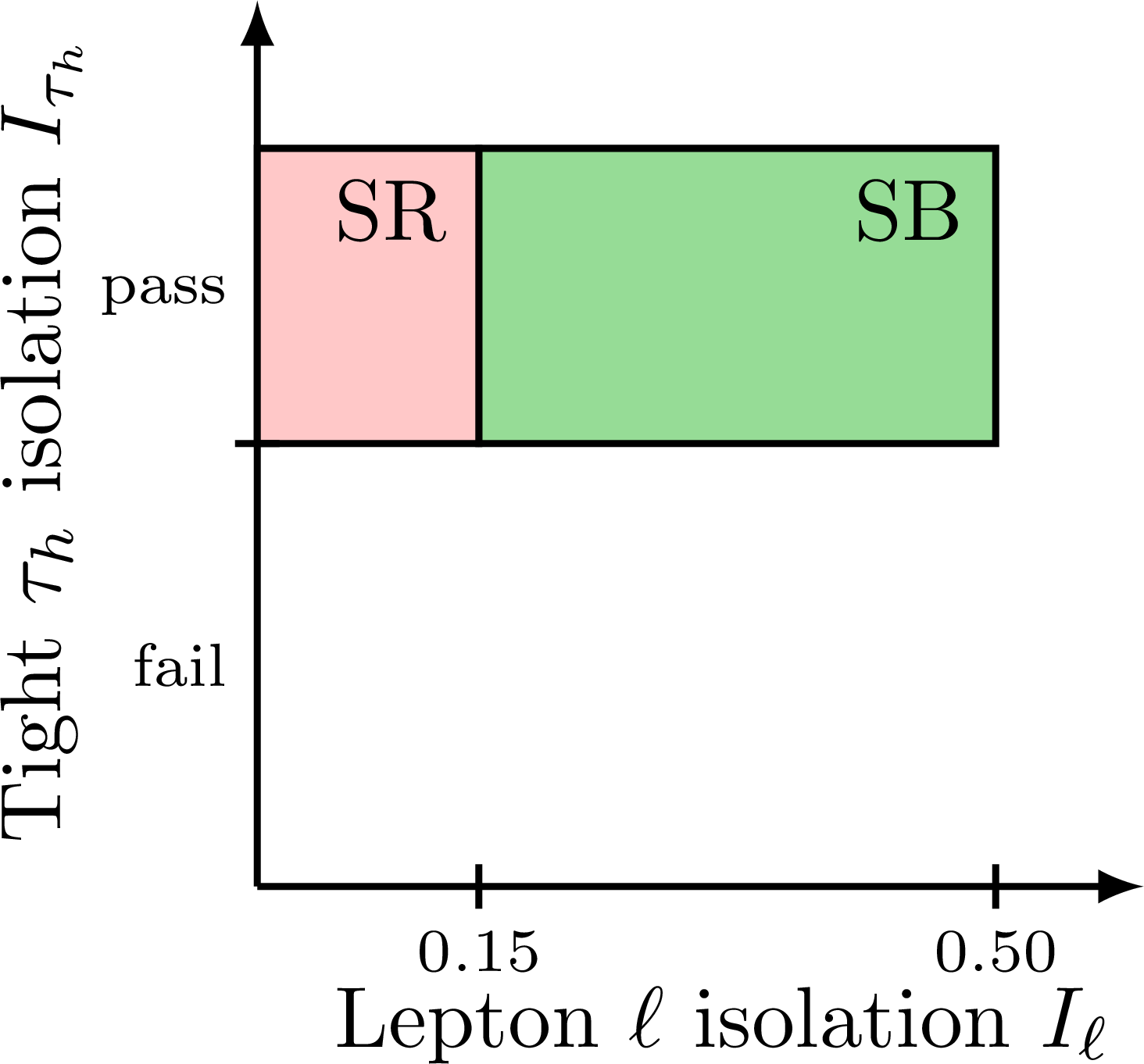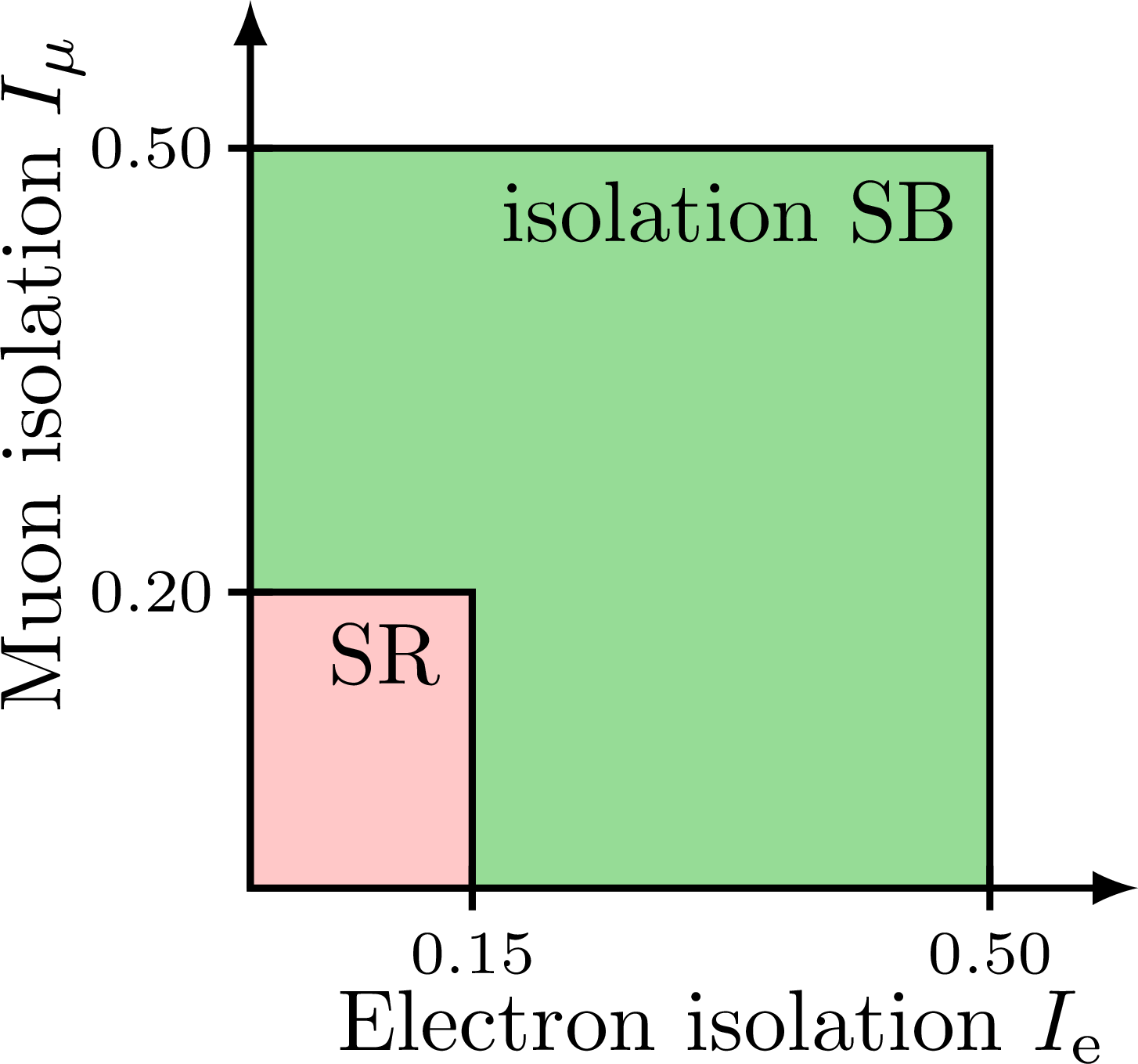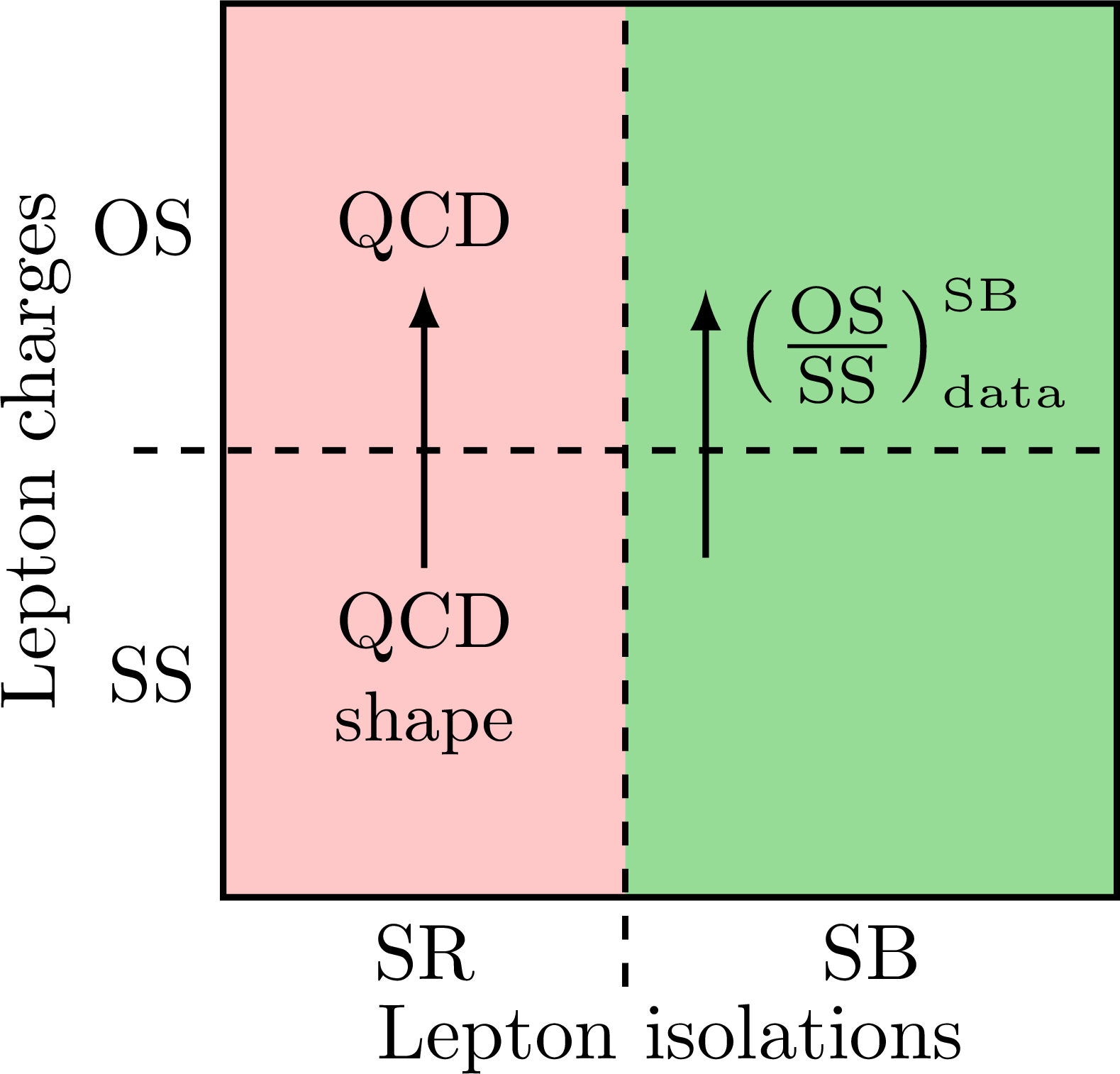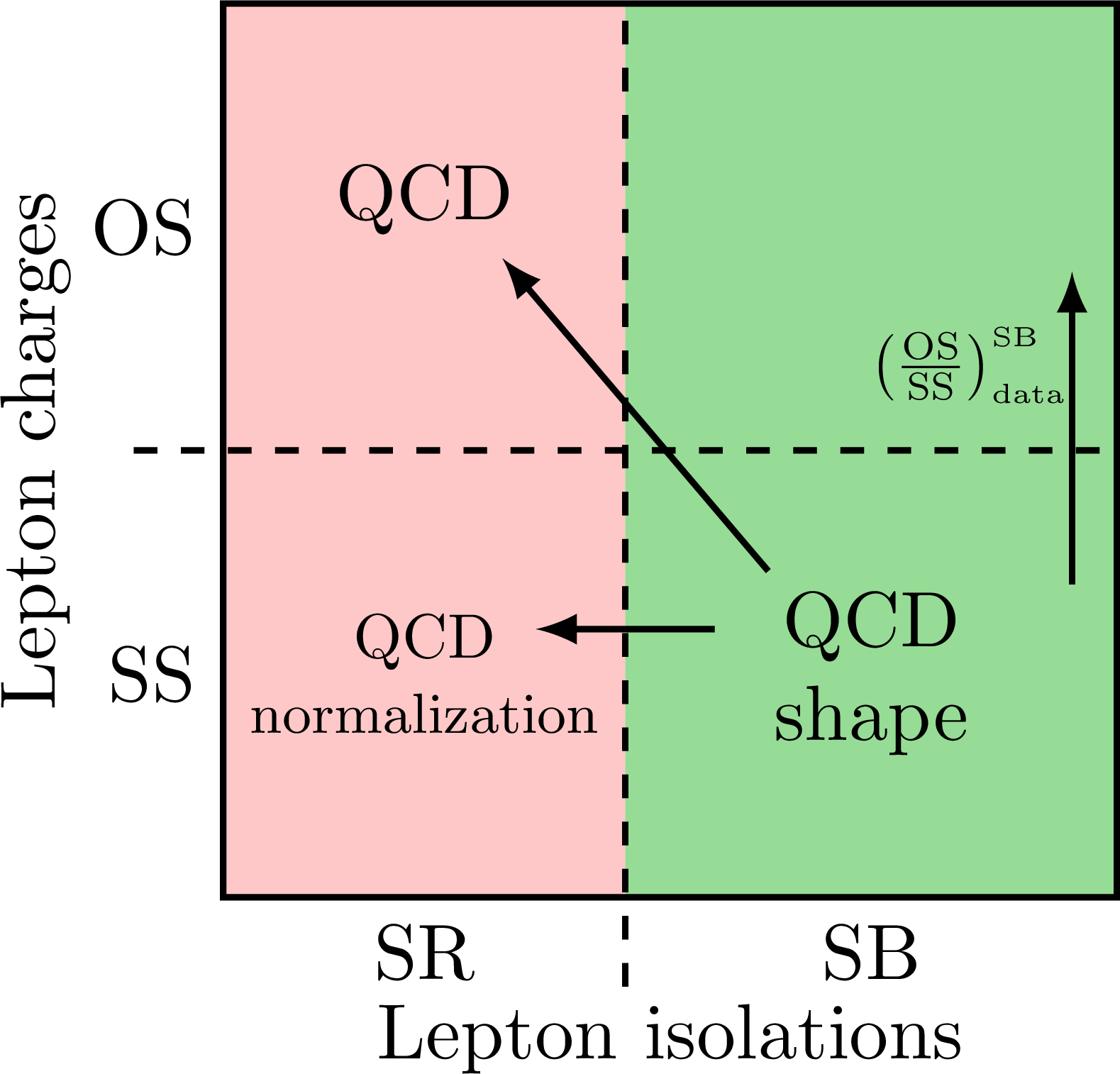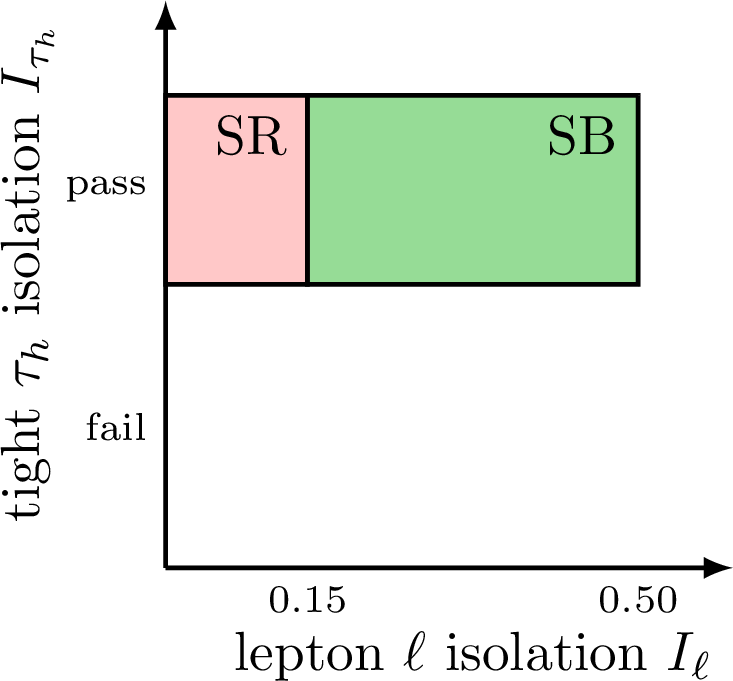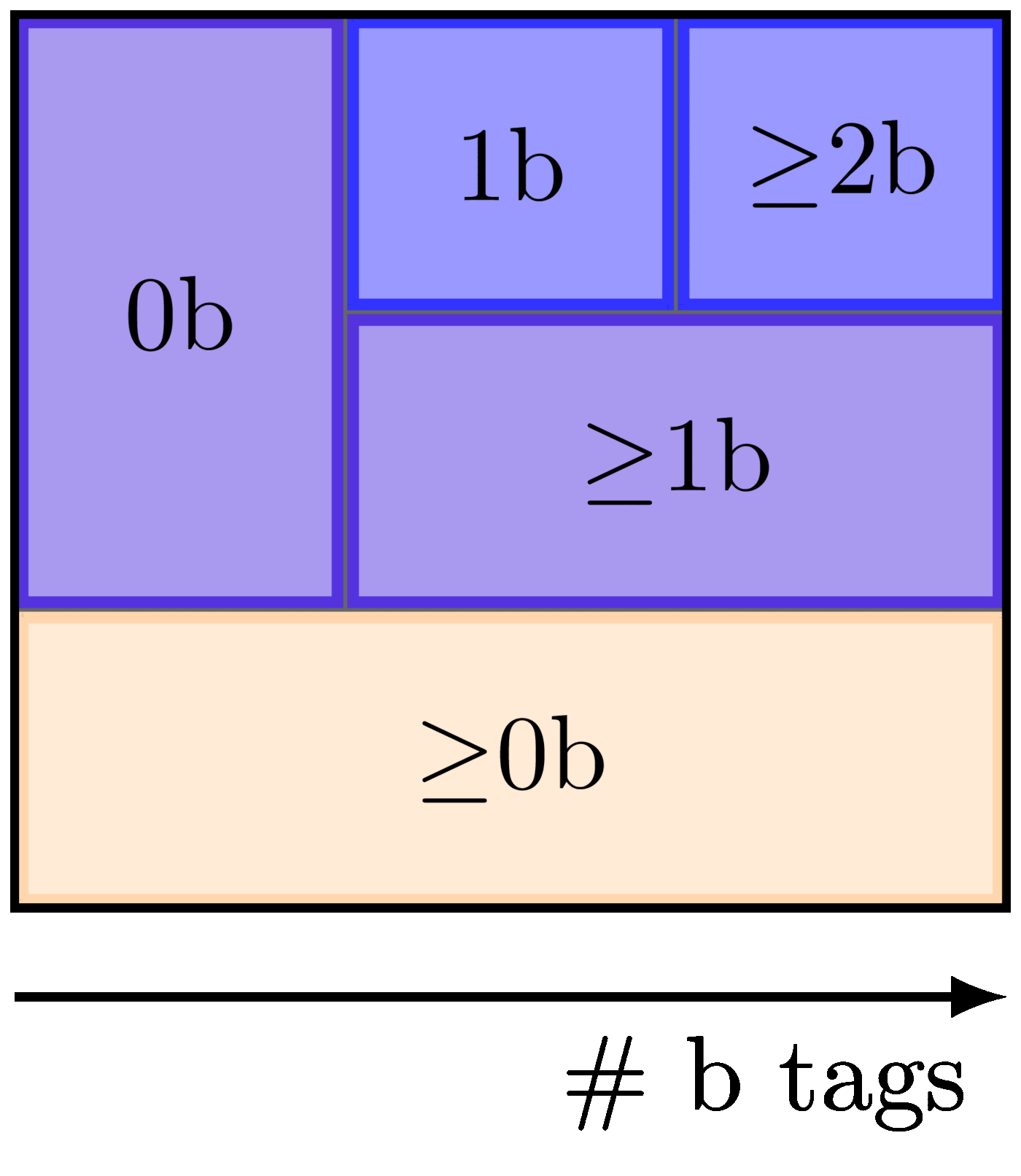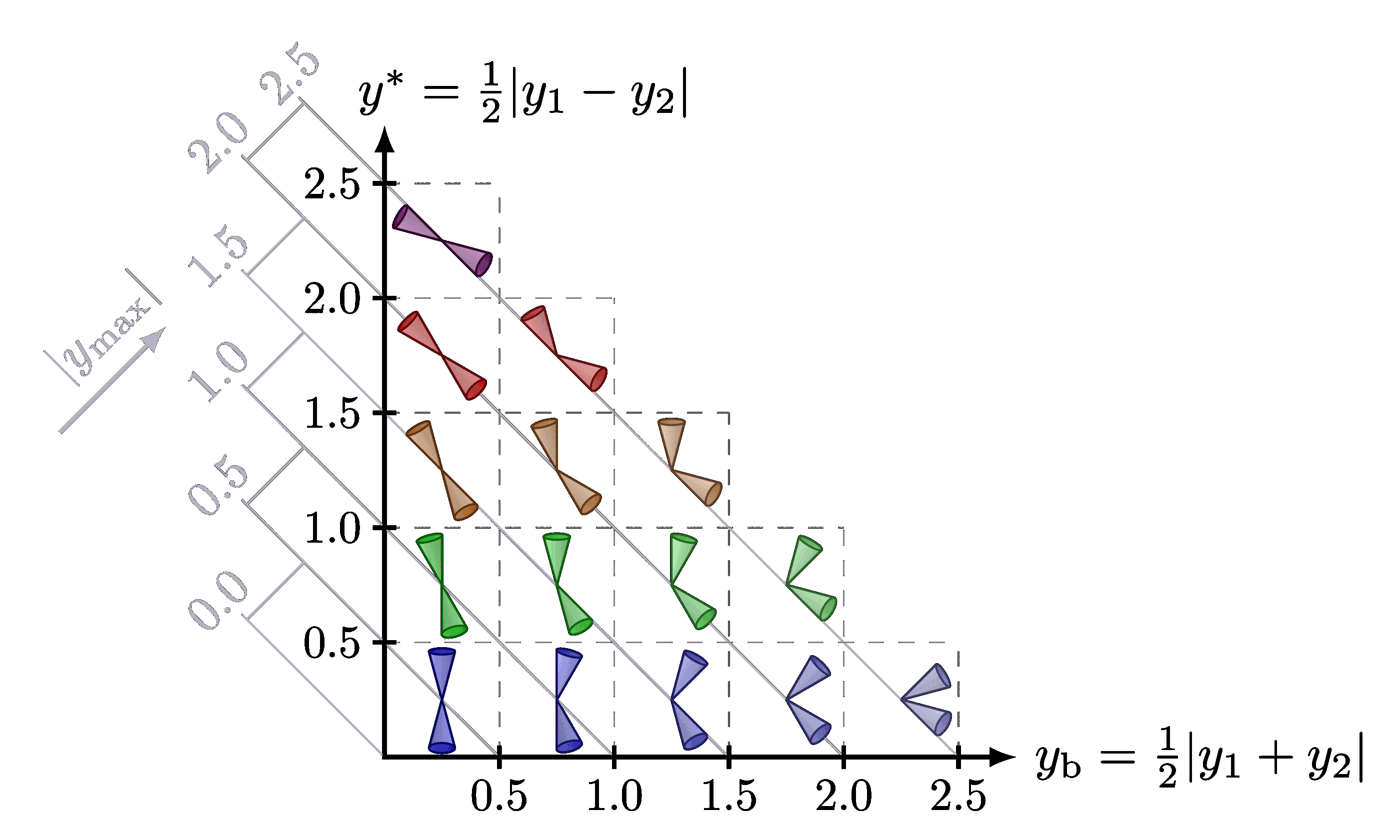Signal and controls regions with isolation sidebands in 2D for analyses of proton-proton collision data. Also see the ABCD method, or event categorization with jets.
Edit and compile if you like:
% Author: Izaak Neutelings (June 2017)\documentclass{article}\usepackage{amsmath} % for \text\usepackage{tikz}\tikzset{>=latex} % for LaTeX arrow head\usetikzlibrary{patterns} % for hatches area% colors\definecolor{mylightred}{RGB}{255,200,200}\definecolor{mylightblue}{RGB}{172,188,63}\definecolor{mylightgreen}{RGB}{150,220,150}% split figures into pages\usepackage[active,tightpage]{preview}\PreviewEnvironment{tikzpicture}\setlength\PreviewBorder{1pt}%\def\tick#1#2{\draw[thick] (#1) ++ (#2:0.015) --++ (#2-180:0.03)}%\def\square#1#2{% \draw[thick,blue!80,fill=blue!40,line width=1.1]% (\ex+#1+\ey) rectangle ++(1-2*\ex,1-2*\ey)% node[black,midway,scale=0.8] {#2};%}%\def\rectangle#1#2#3{% \draw[thick,blue!80,fill=blue!40,line width=1.1]% (\ex+#1+\ey) rectangle ++(-2*\ex+#2-2*\ey)% node[black,midway,scale=0.8] {#3};%}\begin{document}% ISOLATION REGIONS 1\begin{tikzpicture}[scale=6]% define to change easily\def\isolep{0.15}\def\isotau{0.30}\def\isotauM{0.10} % medium\def\isotauM{0.10} % loose\def\isoSB{0.50}
Click to download: control_region.tex • control_region.pdf
Open in Overleaf: control_region.tex


